- recipe_tracing_en
- recipe_tracing_pt
Downloads:
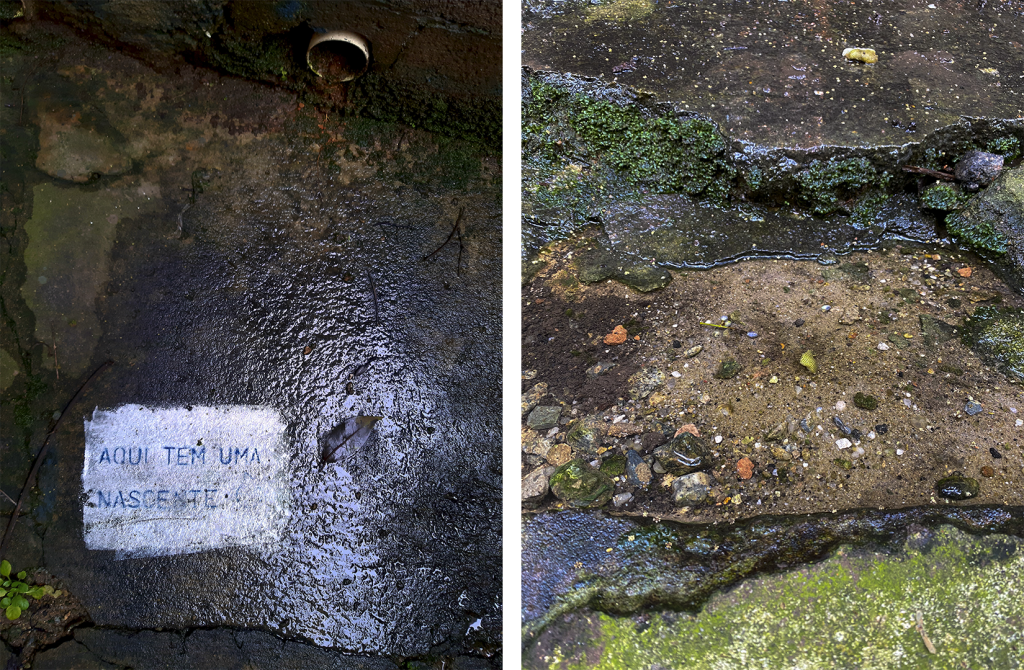
Tracing can be mobilised as a tactic for re-vealing and un-covering hidden rivers and their stories, as well as the human and more-than-human relations entangled with them. A trace is like a footprint left in the ground, what made the mark is no longer there, but its passage disturbs the visible order of space. Reading traces becomes a way of narrating the invisible, a sensitive and situated practice that moves between speculative gesture, evidencing, and poetics. Rather than seeking definitive interpretation, this tactic invites us to hold and feel the trace, to activate non-linear, sensorial forms of knowing. In this sense, tracing emerges as a critical tactic for urban eco-political movements: capable of unsettling the concealment of urban elements alongside human histories, fostering multispecies alliances, and reclaiming alternative forms of repair and environmental justice.
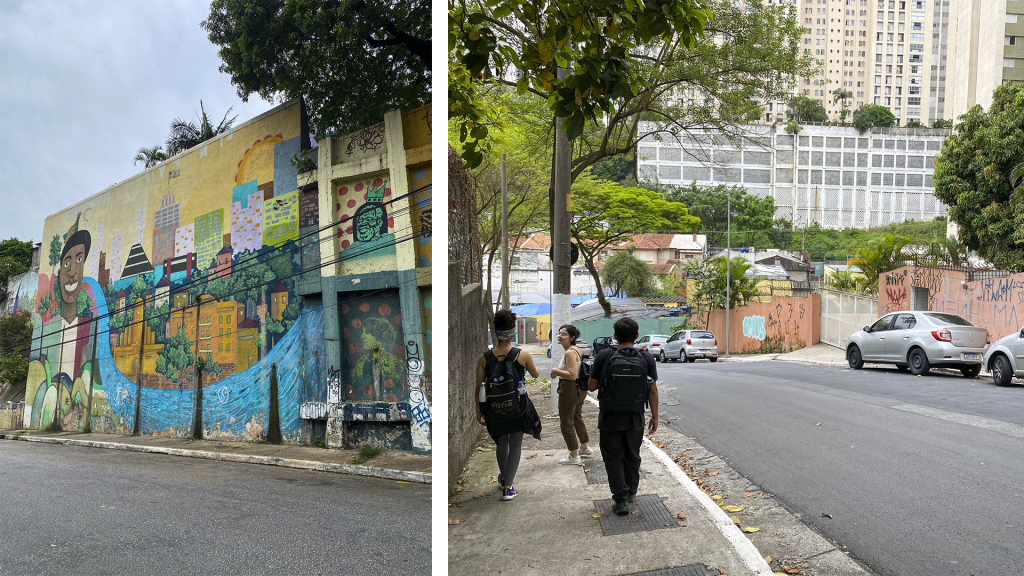
In Brazil, the team of the Ground Atlas (atlasdochão.org), Ana Luiza Nobre and David Sperling, together with Laura Kemmer, proposed a collective activity of tracing the Saracura river. Riparians from Floating, Labtek and Salve Saracura, together with Brazilian students, and invited international and indigenous researchers and artists, set out for a two-week activity to collect traces such as plant leafs, stories, mappings, and images that evidenced the river flowing underneath the asphalt and concrete of downtown São Paulo.
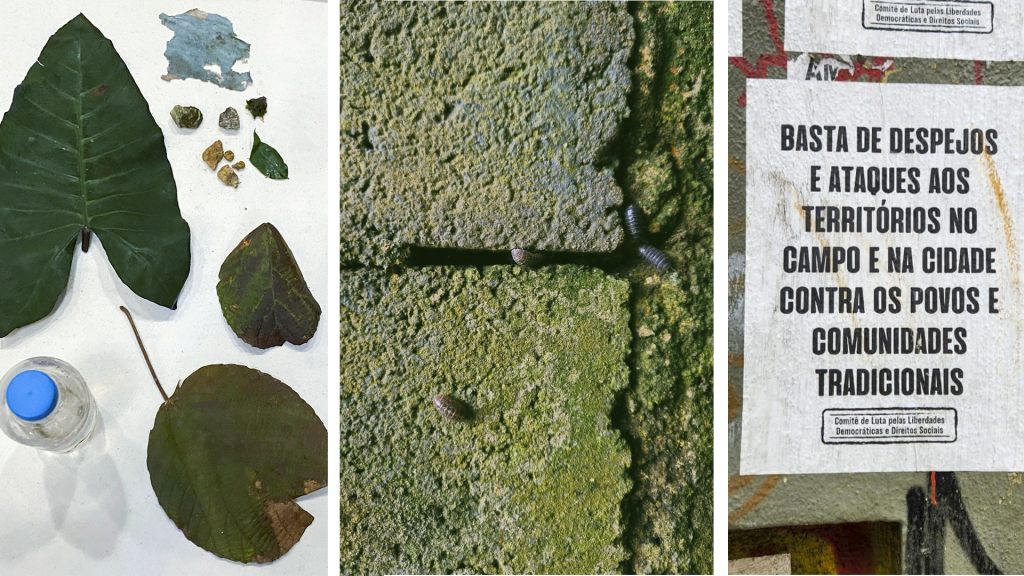
The taioba plant is one such trace that evidences the river, because it is a species that likes to grow near to springs. One group of workshop participants also identified little armadillos (“tatu-bolinhas”, or pill bugs in english) as indicators of the river, since these small creatures thrive in damp, humid environments. Others collected protest posters as traces of struggles against the forced displacement of indigenous and black river communities, whose (hi)stories have been silences together with the river.
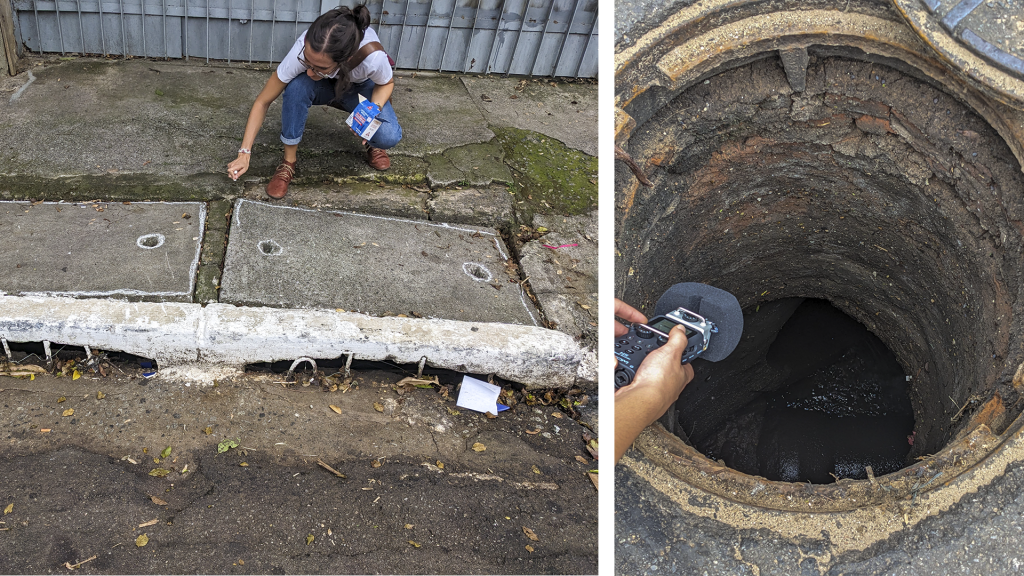
One group presented themselves as the “Brazilian Hydrolinguistic Research Group” and stated that from their inspection of five gutters located in a street in downtown São Paulo, they could capture twenty-nine sound frequencies originating from Amazonian waters. One member of this group, the indigenous researcher and artist Juarez Lopez has transcribed these frequencies to Baniwa language, as spoken by the indigenous peoples from the affluents of the Rio Negro in the Amazonas region, subsequently translating to Portuguese and to English and German as well.
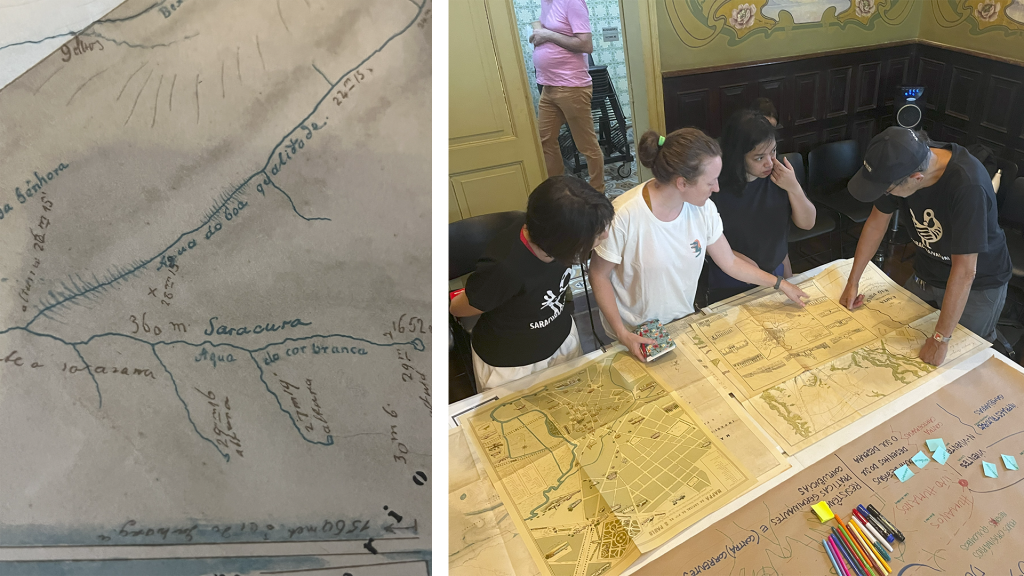
After the two weeks, all groups placed the traces collected on different (historic) maps of the neighbourhood and the river and brought them into constellations. Activists from the local Black and environmental movements, in particular the Mobilização Saracura Vai-Vai, participated in this activity and helped our riparians with the maps and traces.
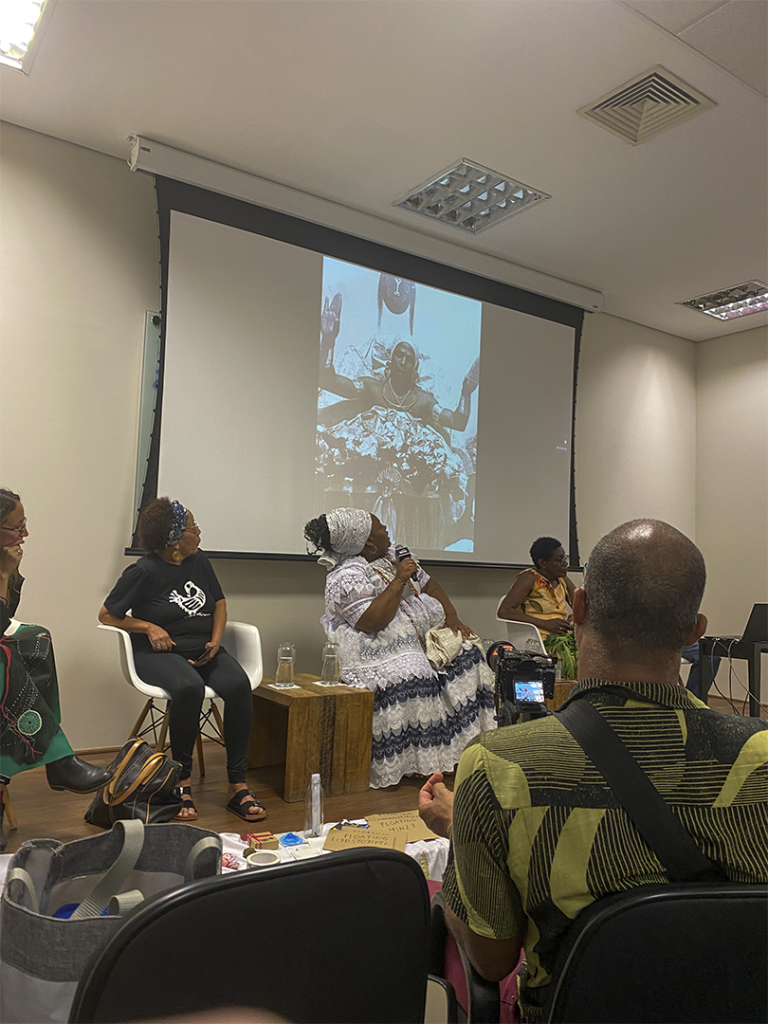
For the final presentation and discussion of the results of our river tracing exercise, we organised a symposium on “reading the sediments”. This name has been chosen to honour Mãe Jennifer, a local spiritual leader of the Afro-Brazilian Candomblé religion, who has become an official reader of the Saracura sediments at a local excavations site, where archeologists have found traces of an urban quilombo (maroon settlement) in the Saracura riverbed.
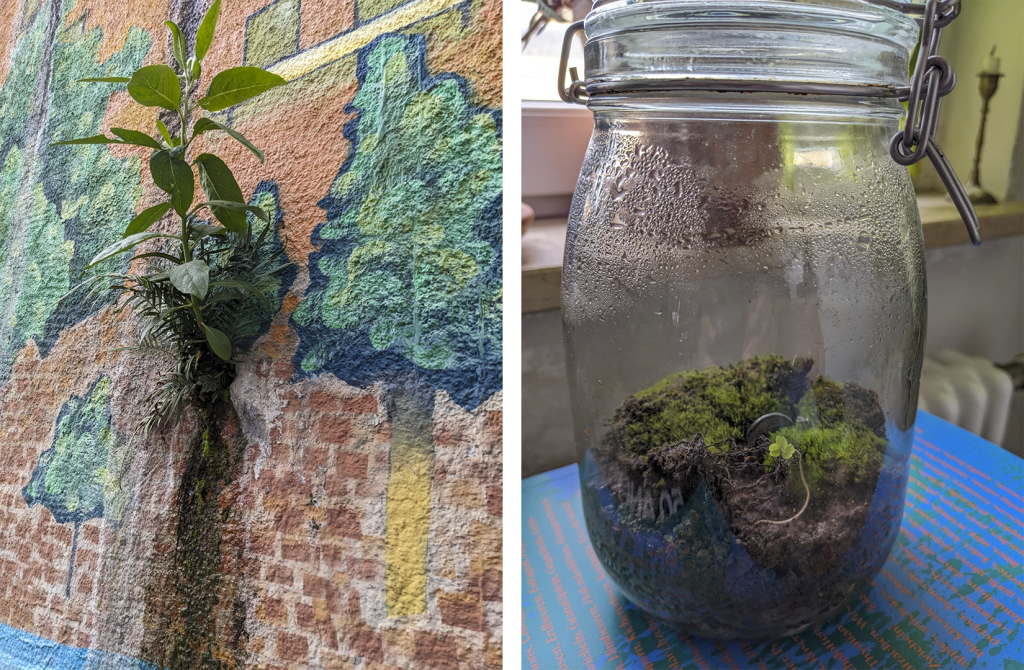
Here you can see the water of the Saracura River running out of the wall. A little moss, which indicates the moisture of the river water, was taken from this spot and traveled to Berlin together with soil and a coin from Bixiga. In Berlin, this ecological evidence was preserved in a so-called “closed ecosystem”.
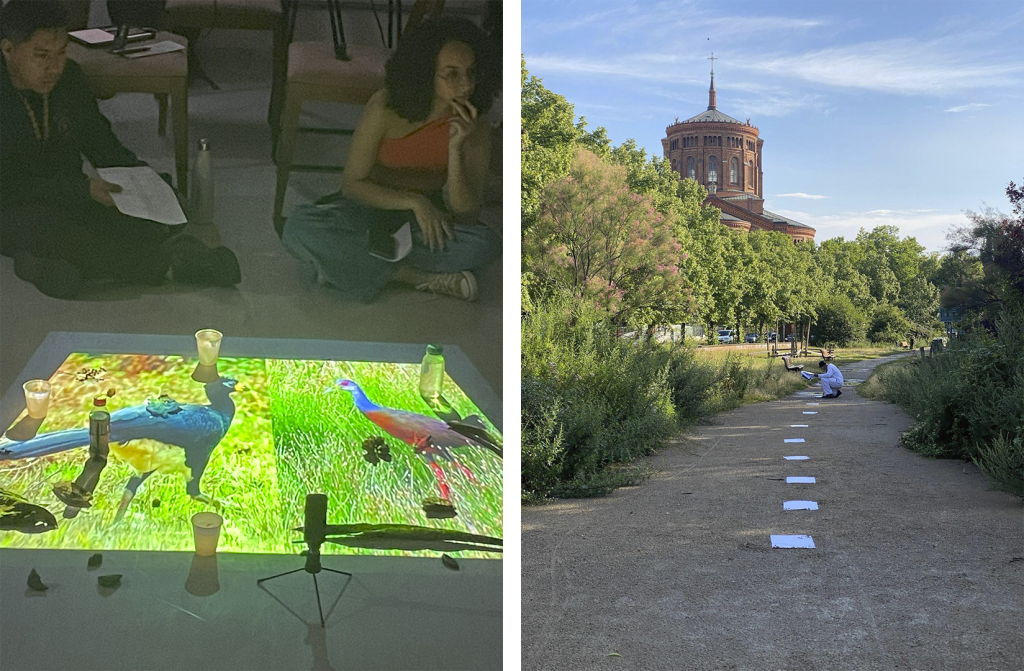
At other moments, we have circulated the tactic of tracing to Rio de Janeiro and Berlin, where we have enacted performative readings of the “Letters to the river Saracura”, inviting participants to collect traces of local waterbodies and to share in a circle, and organised sound walks where the stories of the São Paulo river provoke solidarity and correspond [insert link: correspondences] with with stories of water bodies in other cities around the world.